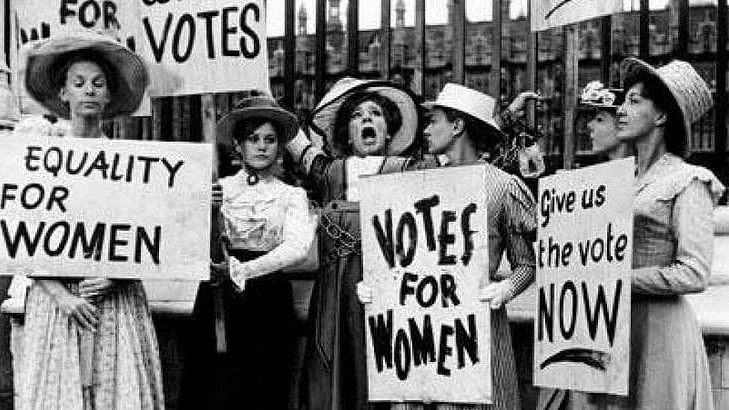Every year the world celebrates Women's History Month in March and International Women's Day on 8th March. This isn't just a recent phenomenon. Its roots stretch back to a pivotal moment in 1917, when a powerful protest in Russia sparked a global movement for women's rights. Dive deep into the rich history of Women's History Month and discover the pivotal events and influential figures that led to the creation of this dedicated time to celebrate women's achievements and contributions.
What is the theme for Women’s History Month 2024?
In commemoration of National Women’s History Month, the theme for 2024, “Women Who Advocate for Equity, Diversity, and Inclusion,” serves as a poignant reminder of the invaluable contributions made by women across the nation who tirelessly champion the cause of eliminating bias and discrimination from our society. This theme not only honors the trailblazers of the past but also celebrates the contemporary leaders who continue to pave the way towards a more equitable and inclusive future for all.

Origins of Women's History Month
The rich tapestry of Women's History Month finds its roots in the historic events of March 8, 1917, when women in Petrograd, Russia, staged protests and strikes demanding food and an end to the empire's reign. Just a week later, their fervent actions led to the abdication of the Tsar, marking a watershed moment in the fight for women's rights. Inspired by this pivotal event, Clara Zetkin proposed in 1921 to designate March 8 as International Women’s Day, a global celebration of women's achievements and a rallying cry for gender equality.
The seeds of Women’s History Month were sown in Santa Rosa, California, in 1978, when the Education Task Force of the Sonoma County Commission on the Status of Women organized a week-long celebration timed to coincide with International Women’s Day. This local initiative served as a catalyst for change, inspiring advocates across the country to amplify women's voices and honor their contributions to society. The National Women’s History Project, later renamed the National Women’s History Alliance, emerged from this grassroots movement, dedicated to promoting women’s achievements and ensuring their rightful place in history. By 1986, the momentum had grown, with 14 states officially designating March as Women’s History Month, a testament to the growing recognition of women’s indispensable role in shaping our collective narrative.

Presidential Proclamations and Congressional Recognition
The journey towards nationwide recognition culminated in a series of congressional resolutions between 1988 and 1994, urging the president to proclaim March as Women’s History Month. These resolutions laid the groundwork for official recognition at the highest levels of government, culminating in annual proclamations issued by successive presidents since 1995. Notably, former President Barack Obama’s 2011 proclamation commemorated the centennial of International Women’s Day, underscoring the enduring struggle for gender equality and the indispensable role of women in shaping our shared history.
Significance of Women’s History Month “Colors”
Central to the celebration of Women’s History Month are the symbolic colors of purple, green, and white, which trace their origins to the suffragist movement of the early 20th century. Purple, a color historically associated with justice and dignity, represents the ongoing fight for gender equality and the empowerment of women. Green symbolizes hope and renewal, evoking the spirit of progress and resilience that defines the women’s rights movement. White, with its connotations of purity and unity, serves as a poignant reminder of the collective solidarity that binds women together in their quest for equity and inclusion.

How is Women’s History Month Celebrated in different countries?
International Women’s Day is celebrated with fervor and enthusiasm across the globe, with each country adding its own unique cultural flair to the festivities.
1. Italy
In Italy, March 8 is synonymous with the giving of small yellow mimosas, symbolizing female strength and solidarity. These vibrant flowers serve as a poignant reminder of the resilience and fortitude of women in the face of adversity.
2. Romania
Similar to Mother’s Day, International Women’s Day in Romania provides an opportunity for people, particularly men, to express their appreciation for the women in their lives through the exchange of cards and flowers. This tradition underscores the importance of honoring and cherishing the contributions of women to society.
3. United States
While International Women’s Day is not an official holiday in the United States, the entire month of March is dedicated to honoring women’s achievements and contributions to history. From rallies and conferences to business events and educational programs, Women’s History Month serves as a platform for celebrating the remarkable accomplishments of women across all walks of life.
4. Russia
In Russia, International Women’s Day holds special significance as a national public holiday dating back to 1918. While the original political significance of the day may have faded over time, it remains an occasion for honoring and celebrating the women of Russia through acts of appreciation and gift-giving.
5. China
International Women’s Day in China is marked by a mixture of tradition and commerce, with employers encouraged to grant female staff a half-day off as a gesture of recognition and appreciation. Additionally, men are encouraged to express their appreciation for the women in their lives through the exchange of gifts and tokens of affection.

6. Australia
Australians have long embraced International Women’s Day as an opportunity to celebrate the achievements and contributions of women to society. From panel discussions and breakfast events to public forums and art exhibitions, the day is marked by a diverse array of activities that highlight the importance of gender equality and women’s empowerment.
7. Spain
In Spain, International Women’s Day has emerged as a powerful platform for advocating for women’s rights and equality. Following the success of the general strike in 2018, which saw millions of women take to the streets in protest, the Spanish people continue to mobilize and raise their voices in support of gender equality and social justice.
8. United Kingdom
The Women of the World festival, held annually in London and other cities across the UK, serves as a vibrant celebration of women’s achievements and contributions to society. Featuring a diverse array of speakers, activists, and performers, the festival provides a platform for addressing pressing issues facing women today and fostering meaningful dialogue and engagement.
9. Chile
In Chile, International Women’s Day is marked by vibrant marches and demonstrations, with participants donning green handkerchiefs as a symbol of their support for sexual and reproductive rights. Through chants, drumming, and elaborate costumes, protesters demand gender equality and social justice, underscoring the importance of collective action and solidarity.
10. Argentina
Celebrated since the early 1900s, International Women’s Day in Argentina has evolved into a day of protest and advocacy, with citizens taking to the streets to demand an end to violence against women, equal pay, and greater representation in politics and the arts. Through a combination of marches, rallies, and cultural events, Argentinians continue to raise their voices in support of gender equality and social change.
As we celebrate Women’s History Month in 2024, let us reaffirm our commitment to honoring the resilience, achievements, and contributions of women worldwide. Through education, advocacy, and collective action, we can build a future where every woman’s voice is heard, valued, and celebrated. Together, let us strive towards a world where equity, diversity, and inclusion are not just aspirations, but fundamental principles that guide our collective journey towards progress and equality.





























